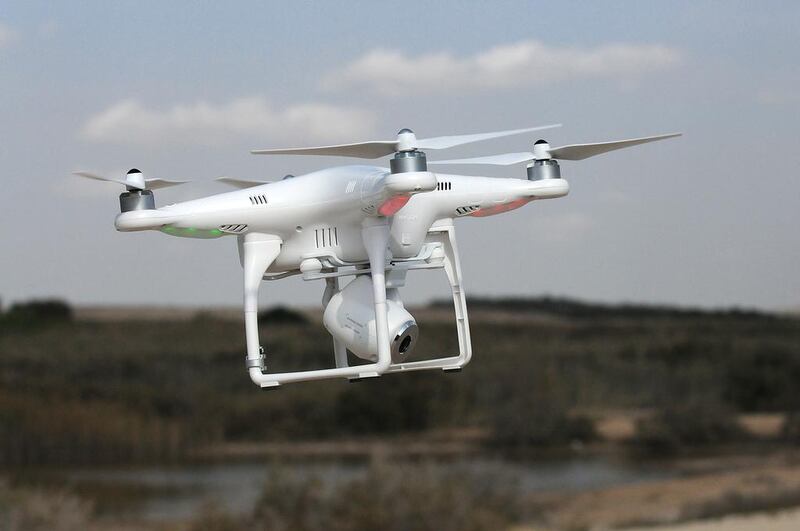ABU DHABI // Remote-controlled flying drones are being used to monitor the flamingo population at the Al Wathba Wetland Reserve.
The 1.2kg drones have a flying speed of about 10-15 metres per second and can reach altitudes of up to 500m. They can stay airborne for 25-30 minutes and can take videos and photographs or wildlife.
“Drones are the future of conservation and conservation is impossible without adequate field data,” said Dr Shaikha Salem Al Dhaheri, executive director of terrestrial and marine biodiversity for the Environment Agency Abu Dhabi (EAD).
“Think of drones as airborne robots, able to access the difficult-to-reach areas while minding environmental sensitivities through the minimisation of human presence,” said Dr Al Dhaheri.
“EAD has a wide range of mapping and tracking technologies used in the field and the use of drones to monitor flamingo numbers is yet another addition to a repertoire of technological tools we are using to better understand and protect biodiversity in Abu Dhabi.”
The drones will be used in hard-to-reach areas to capture footage of the birds to verify numbers without making close contact.
EAD will also benefit from the accuracy of the unmanned aerial vehicle’s images of the breeding birds as well as providing a data collection method that is cost and time effective.
The greater flamingo can be observed all year round in lagoons and mudflats along the coast and Al Wathba Wetland Reserve is home to the first successful breeding grounds of the bird’s population in the Arabian Peninsula.
Earlier last year, the Al Wathba Wetland Reserve was declared a Ramsar site, joining a list of more than 2,000 protected wetlands around the world.
Dr Salim Javed, section manager of terrestrial assessment and conservation, said the drones were a less invasive way to keep check of animal populations. In time, they will be used to monitor other animals such as gazelle and oryx.
“At EAD we always try to use new technology and we are using it especially for counting species that are hard to count. Once we are successful with this we hope to expand it.”
Dr Javed said the team had been researching the technology for the past year and using it for about seven months.
“The results are amazing considering you don’t have to go to the area and invade the privacy of the species,” he said. “It’s a very good way for areas that are difficult to access and is much less time consuming and less invasive for the animals. For counting birds, you can take a couple of snapshots and start counting.
“It’s a very time-efficient, cost-efficient and manpower-efficient tool.”
About 10 species of birds are being assessed on a regular basis using the drones, including lesser crested terns.
“We are using it for other breeding birds right now as it’s the season for the sea birds. We’re not using those birds that breed individually but those which breed in large colonies, colonial nesting.”
Just two staff at EAD are qualified to operate the drones, but more will be trained. Flying the drones is not complicated but requires some practice, said Dr Javed.
mswan@thenational.ae





